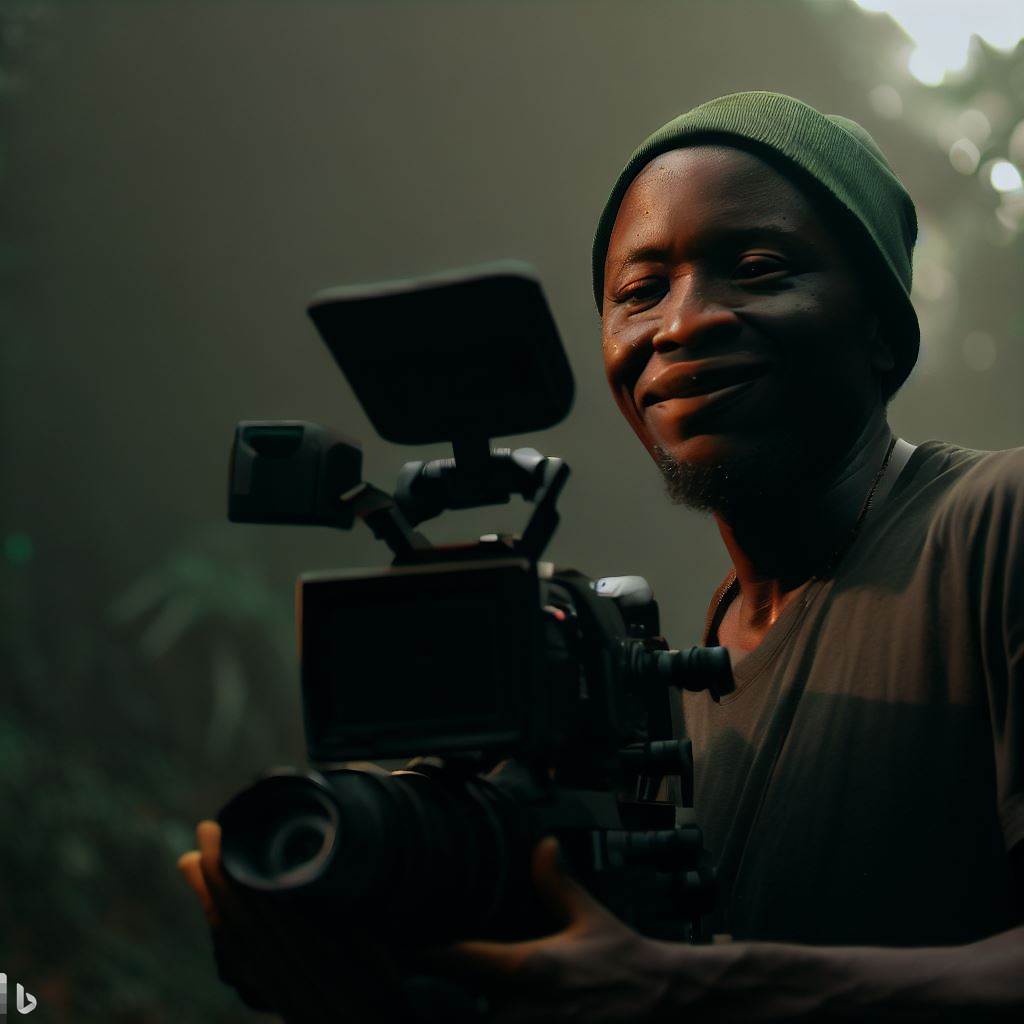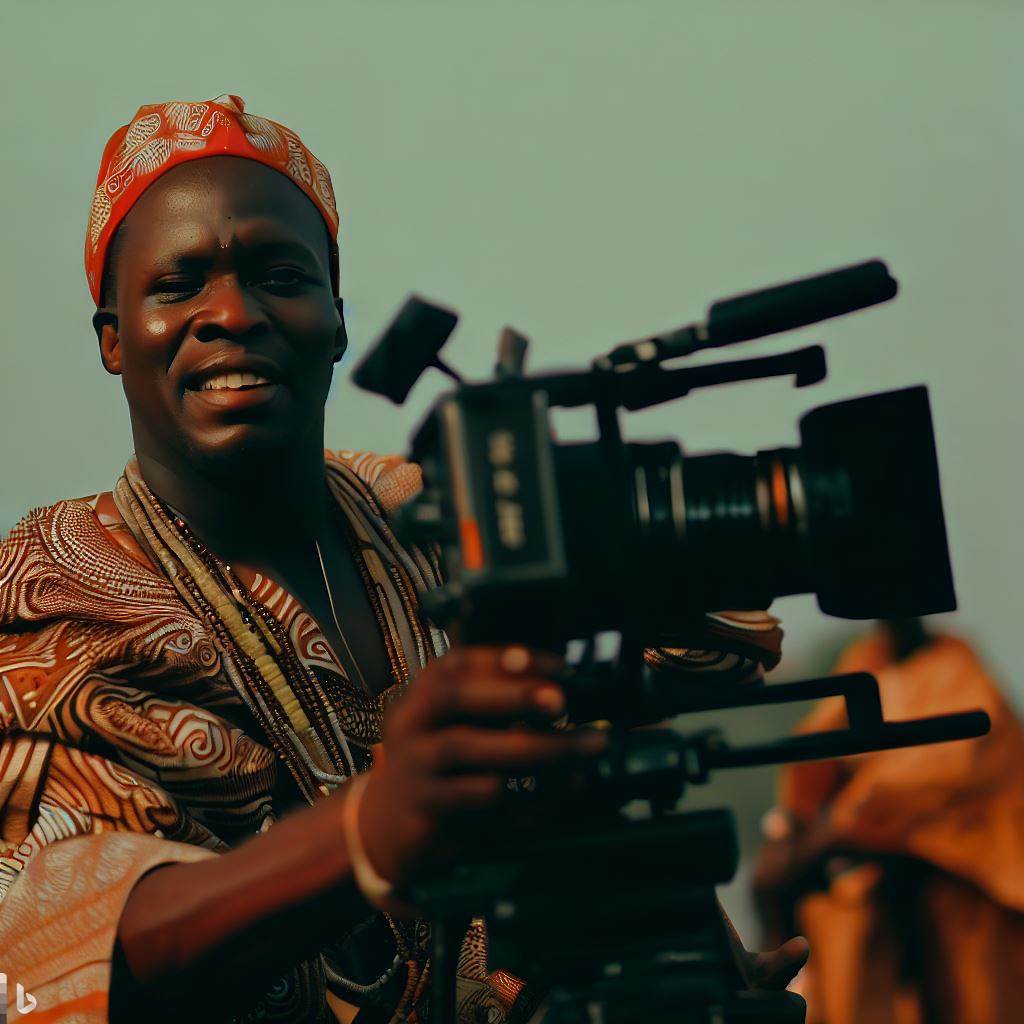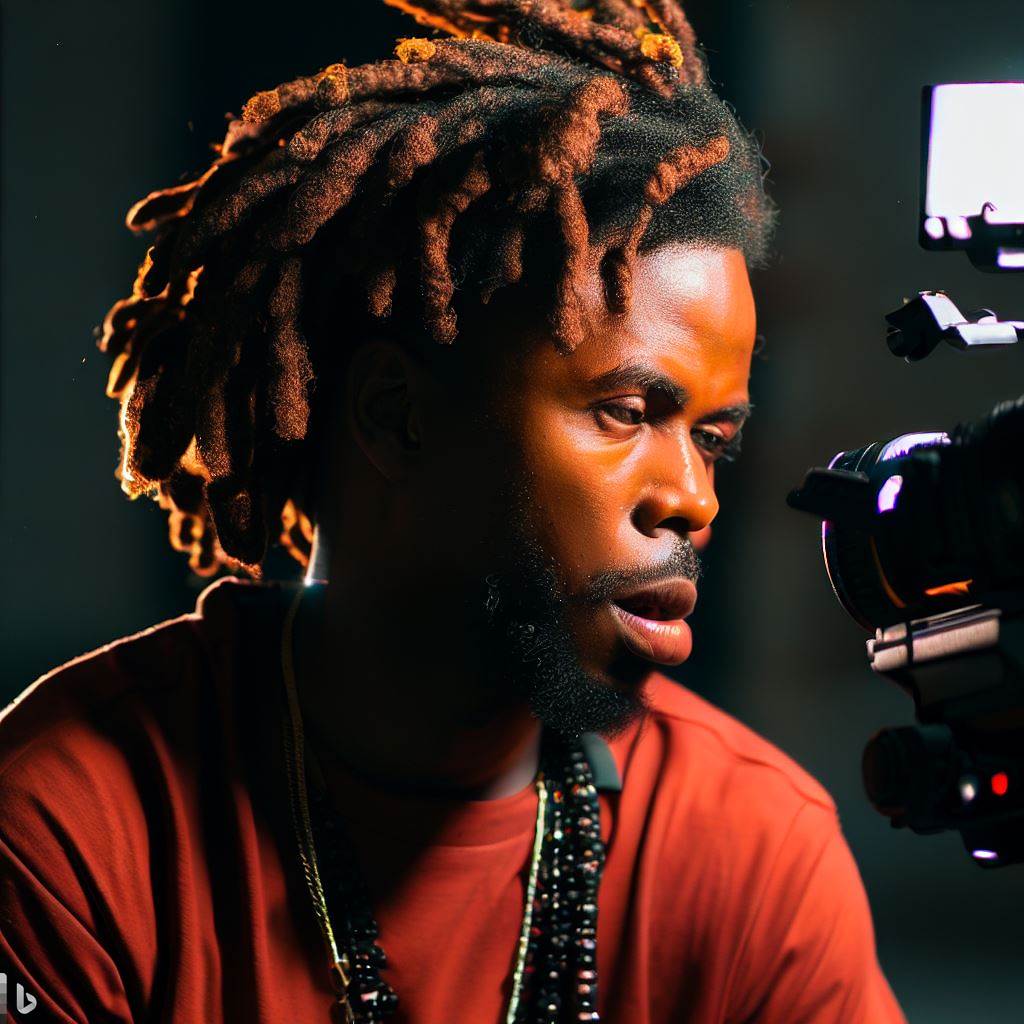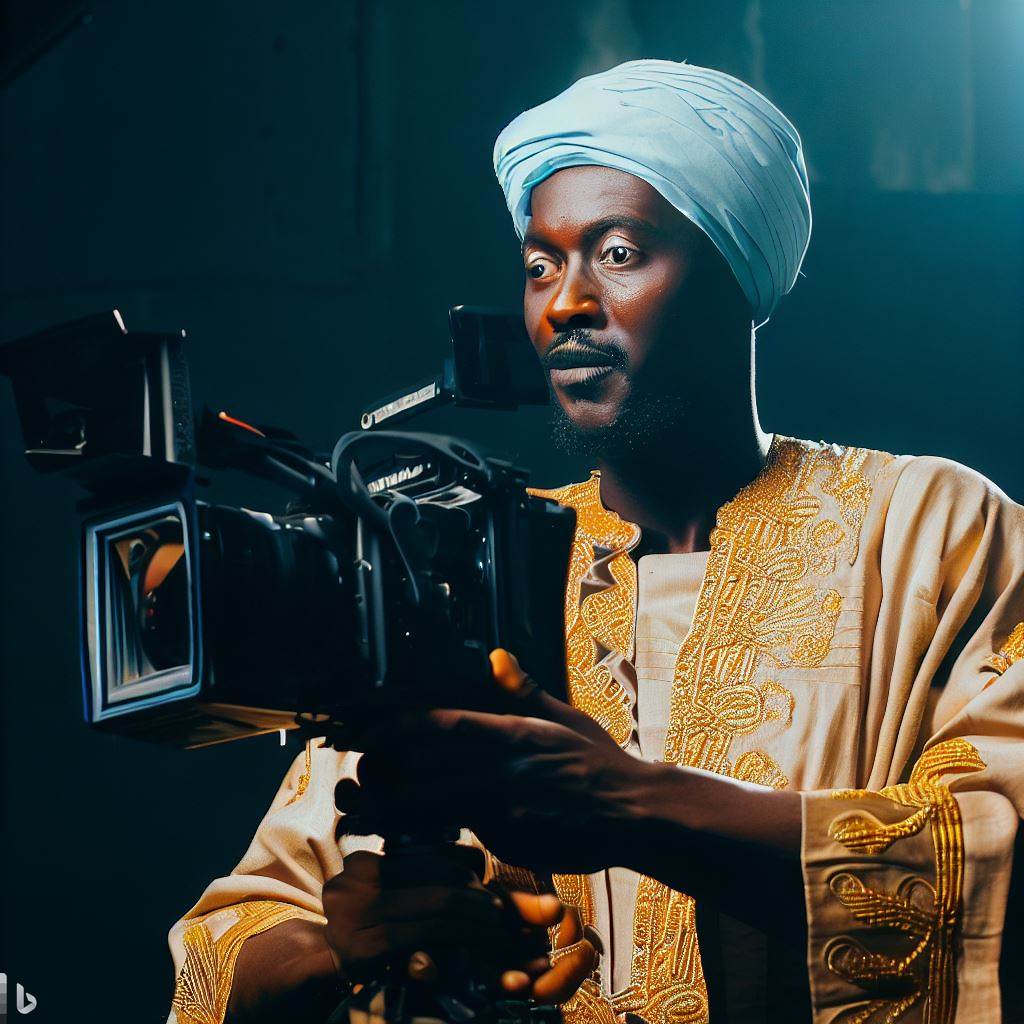Introduction
Definition of cinematography
Cinematography is the art of capturing and manipulating images through the use of camera techniques and aesthetics.
It plays a crucial role in the production of documentaries as it enhances storytelling and engages the audience visually.
Nigerian documentaries, like documentaries worldwide, aim to inform, educate, entertain, and provoke thought.
They cover a wide range of topics such as culture, history, politics, and social issues.
Nigerian filmmakers have increasingly recognized the value of cinematography in their documentaries, utilizing it to convey their messages effectively.
Importance of Cinematography in Documentaries
Cinematography is essential in documentaries as it helps create a visual narrative that complements and enhances the story being told.
Through carefully chosen camera angles, framing, lighting, and composition, cinematography can evoke emotions in the viewers and immerse them in the subject matter.
It allows filmmakers to portray their subjects creatively, capturing their essence and presenting them in a visually compelling manner.
In Nigerian documentaries, cinematography helps showcase Nigeria’s rich cultural diversity, turbulent history, and socio-political issues, effectively transporting viewers into different worlds and engaging them more deeply.
General Overview of Nigerian Documentaries
Nigerian documentaries have evolved over the years, with filmmakers embracing various themes and styles.
Some documentaries focus on Nigeria’s history, shedding light on significant events like the Biafra war and the struggle for independence.
Others explore cultural aspects, drawing attention to traditional practices, music, and art forms.
Nigerian documentaries also tackle contemporary issues such as corruption, human rights, gender equality, and environmental concerns.
Through cinematography, these documentaries captivate audiences, challenging their perspectives and generating conversations about relevant topics.
Nigerian filmmakers continue to push the boundaries of storytelling, employing cinematography to present their narratives in visually compelling and thought-provoking ways.
Cinematography plays a crucial role in Nigerian documentaries, enhancing storytelling and engaging audiences visually.
This artistic technique allows filmmakers to convey their messages effectively, capturing the essence of their subjects and immersing viewers in different worlds.
Nigerian documentaries cover a wide range of topics, from history to culture and contemporary issues, challenging societal norms and generating meaningful conversations.
Cinematography continues to evolve in Nigerian documentaries, pushing the boundaries of storytelling and artistic expression.
History of Cinematography in Nigerian Documentaries
Early days and limitations
- Challenges faced by filmmakers in Nigerian documentaries limited the quality of cinematography.
- Western filmmaking techniques had a significant influence on early Nigerian cinematography in documentaries.
Technological advancements in Nigerian cinematography
- The introduction of digital cameras and equipment revolutionized Nigerian documentary cinematography.
- Nigerian cinematography saw a dramatic improvement in production quality with advanced technological tools.
Notable Nigerian cinematographers and their contributions
- Mentioning influential filmmakers in Nigerian cinematography and documentaries.
- Highlighting the achievements and impact of notable Nigerian cinematographers in the documentary genre.
Nigerian documentaries have come a long way in terms of cinematography.
In the early days, filmmakers faced numerous challenges that greatly impacted the quality of cinematography.
Limited resources and lack of advanced equipment hindered the potential for visually stunning documentaries.
Additionally, the influence of Western filmmaking techniques played a significant role in shaping Nigerian cinematography.
Filmmakers looked to Western documentaries for inspiration, learning from their creative approaches and technical methods.
This influence helped establish a foundation for Nigerian filmmakers to build upon.
However, with the introduction of digital cameras and equipment, Nigerian cinematography underwent a remarkable transformation.
The new technology revolutionized the way documentaries were shot, allowing for more flexibility and creativity in capturing scenes.
Nigerian filmmakers now had access to advanced tools that enhanced the visual aspect of their documentaries.
Moreover, the improvement in production quality cannot be overstated.
The use of digital cameras and equipment enabled Nigerian filmmakers to achieve high-quality visuals, rivaling international standards.
The shift from traditional film to digital formats opened up new possibilities for storytelling and composition.
Throughout the history of Nigerian cinematography, there have been notable filmmakers who have made significant contributions to the field.
Their creativity and vision have shaped the landscape of Nigerian documentaries.
From pioneers who paved the way to contemporary filmmakers pushing boundaries, each had a unique impact on the growth of cinematography in Nigerian documentaries.
Recognizing and highlighting these influential cinematographers is essential.
Their achievements serve as inspiration for aspiring filmmakers and contribute to the overall development of the Nigerian film industry.
Read: Career Path: How To Be A Professional Translator in Nigeria
Key Elements of Cinematography in Nigerian Documentaries
Lighting techniques
- Lighting plays a crucial role in creating the desired mood and atmosphere in Nigerian documentaries.
- Nigerian documentary films often rely on natural light to capture the authenticity and rawness of the subject matter.
Framing and composition
- Framing is creatively used in Nigerian documentaries to enhance storytelling and evoke emotions in the audience.
- It is important to balance elements within the frame to ensure a visually engaging and harmonious composition.
Camera movement and angles
- Nigerian documentary filmmakers utilize different types of camera movement to add dynamism and visual interest to their films.
- The choice of camera angles in Nigerian documentaries significantly affects the storytelling and audience perception of the subject matter.
Cinematography is an essential aspect of documentary filmmaking, and Nigerian documentaries are no exception.
The art of cinematography brings visual life to the subject matter, enhances storytelling, and captivates the audience through the skillful use of lighting, framing, composition, camera movement, and angles.
Lighting techniques play a crucial role in setting the mood and atmosphere of Nigerian documentaries.
The proper use of lighting can evoke specific emotions and add depth to the narrative.
In Nigerian documentary films, natural light is often favored to capture the authenticity and rawness of the subject matter.
Natural light lends a more organic and immersive feel to the visuals, creating a more relatable experience for the audience.
Framing and composition are key elements that cinematographers utilize to enhance the storytelling in Nigerian documentaries.
Creative framing can guide the viewer’s attention and evoke specific emotions. It allows filmmakers to create visually compelling shots that convey the intended message.
Balancing elements within the frame is crucial to create a visually cohesive composition. Every element placed within the frame contributes to the overall narrative and aesthetic appeal of the documentary.
Camera movement adds dynamism and visual interest to Nigerian documentaries.
Different types of camera movements, such as pans, tilts, and tracking shots, are employed to capture the intricacies of the subject matter.
Read: How to Start a Music Publishing Career in Nigeria
Cinematography Styles in Nigerian Documentaries
Realism and observational approach
- Focusing on capturing real-life situations.
- Creating an immersive experience for the audience.
Experimental and poetic styles
- Utilizing cinematography techniques to evoke emotions.
- Challenging traditional documentary norms.
Hybrid styles and blending genres
- Combining elements of documentary and fiction.
- Pushing the boundaries of storytelling through cinematography.
The diverse cultures and landscapes of Nigeria offer a rich tapestry for cinematographers to work with, allowing for a wide range of visual storytelling possibilities.
Read: Exploring Income Potential: The Pay for Translator in Nigeria

See Related Content: Success Stories of Top Concert Promoters in Nigeria
Case Studies of Nigerian Documentaries with Outstanding Cinematography
Documentary 1 – The Drills of Afi Mountain (2015)
1. Brief overview of the documentary
The Drills of Afi Mountain is a captivating documentary that explores the lives of endangered primates.
2. Analysis of notable cinematography techniques used
The documentary expertly utilizes aerial shots to showcase the vastness and beauty of the Afi Mountain wildlife sanctuary.
Additionally, carefully framed close-ups capture the expressive eyes and intricate details of the drills, creating an emotional connection with the audience.
Documentary 2 – The Naked Option: A Last Resort (2011)
1. Brief overview of the documentary
The Naked Option: A Last Resort is an empowering documentary that addresses the struggle for women’s rights in Nigeria.
2. Analysis of notable cinematography techniques used
The Naked Option skillfully incorporates dynamic tracking shots during protest scenes, effectively capturing the energy and determination of the women fighting for their rights.
The use of handheld cameras brings an immersive feel to intimate interviews, allowing the audience to connect with the subjects on a personal level.
Documentary 3 – Veil of Silence (2014)
1. Brief overview of the documentary
Veil of Silence is a thought-provoking documentary that delves into the lives of Nigerian women living with Vesico-Vaginal Fistula.
2. Analysis of notable cinematography techniques used
The documentary employs a mixture of intimate close-ups and wide-establishing shots to present the harsh realities faced by women with Fistula.
The use of natural lighting enhances the authenticity of the scenes and highlights the emotions etched on the subjects’ faces.
Nigerian documentaries demonstrate the incredible artistry and technical expertise of cinematographers in the country.
Through the skillful use of cinematography techniques, these films elevate the storytelling experience and establish a strong connection with the audience.
Read: Royalties in Nigeria: A Music Publisher’s Perspective
Impact of Cinematography on Nigerian Documentaries
Enhancing storytelling and audience engagement:
- Cinematography plays a crucial role in capturing the essence of a story.
- Through visual elements, it brings emotions, depth, and context to the narrative.
- The use of different camera angles and compositions creates a dynamic viewing experience.
- By employing effective cinematographic techniques, Nigerian documentaries can engage audiences on a deeper level.
Garnering international recognition and awards
- Strong cinematography in Nigerian documentaries attracts global attention.
- The visual beauty and quality of the films increase the chances of international recognition.
- Nigerian cinematographers have recently received accolades at renowned film festivals worldwide.
- These achievements not only promote the documentary industry but also the Nigerian film industry as a whole.
Inspiring the next generation of Nigerian filmmakers
- Effective use of cinematography in Nigerian documentaries sets a standard for aspiring filmmakers.
- The aesthetically pleasing visuals motivate young talents to explore the art of storytelling.
- Seeing their own stories being told through beautiful cinematography encourages Nigerian filmmakers to pursue their dreams.
- As the industry grows, more opportunities for collaboration and support arise, fostering creativity and innovation.
Cinematography has a significant impact on Nigerian documentaries.
The art of capturing and presenting visual stories enhances storytelling, engages audiences, and increases the chances of international recognition.
Furthermore, it inspires the next generation of Nigerian filmmakers to explore their creativity and contribute to the growth of the industry.
With its increasing influence, the art of cinematography continues to shape and elevate Nigerian documentaries to new heights.
Conclusion
Recap of key points discussed in the blog post
Throughout this blog post, we explored the art of cinematography in Nigerian documentaries.
We discussed the importance of visual storytelling, the use of different camera techniques, and the role of cinematographers in capturing the essence of Nigerian culture.
Explore Nigerian documentaries
If you haven’t already, I strongly encourage you to explore Nigerian documentaries.
These films provide a unique perspective on the country’s history, culture, and social issues.
By watching them, you can gain a deeper understanding of Nigeria and its people.
Final thoughts on the art of cinematography in Nigerian documentaries
The art of cinematography in Nigerian documentaries is a powerful tool for storytelling.
The skilled cinematographers behind these films bring the stories to life, capturing the emotions, colors, and beauty of Nigeria.
Through their work, they showcase the immense talent that exists within the Nigerian film industry.
By appreciating and supporting Nigerian documentaries, we can contribute to the growth of the industry and further elevate the art of cinematography in Nigeria.
So, go ahead and dive into the world of Nigerian documentaries, and you will be captivated by the visual masterpieces that await you.




